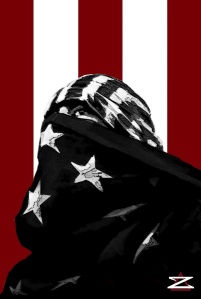To understand the notion of the gaze, one must be aware of the multiple discourses that the gaze circulates throughout media, technology, and culture. Visual culture is representative of the way in which ideological codes have transformed the public’s perceptions of obscene images. The actuarial gaze, thus, is powerfully enacted and best illustrated through political discourses. Allen Feldman tackles the notion of the actuarial gaze in his article, “On the Actuarial Gaze: From 9/11 To Abu Ghraib.” He suggests that, “The political character of the actuarial gaze is explicit in its hierarchical distance from everyday life structures, and in its devaluation of everyday experience and immediacy in favour of the prognostics of expert knowledge and Enlightenment metaphors of achievable social transparency” (Feldman, 165). This idea suggests that the actuarial gaze, especially in relation to the United States representations of war, moves past reality to become metaphorically distant. The image provided is representative of the gaze, specifically as it relates to ISIS representation in the U.S. Political technology has assessed the risk of ISIS in relation to biometrics to unify “a vulnerable yet soverign body” (166). By seeing ISIS as the “other,” or the prisoners of war in Abu Ghraib, the actuarial gaze commands and controls the representations and reactions in the media. The gaze is not only actuarial, however, for the male gaze and the panoptic are elements of the discourse as well. Friedberg comments on gender and visual culture, noting that women have internalized the voyeuristic gaze and are always subjectively ‘objects of the look.’” (Friedberg, 254). Images of power, like the one provided, often depict men in the political realm and women are often objectified if present in the visual realm. The gaze is a complex discourse due to the hegemonic nature of visuality.
Feldman, Allen. “On the Actuarial Gaze: From 9/11 to Abu Ghraib.” The Visual Culture Reader. 2013.
Friedberg, Anne. “The Mobilized and Virtual Gaze in Modernity.” The Visual Culture Reader. 3rd edition, ed. Nicholas Mirzoeff (Routledge 2013)
